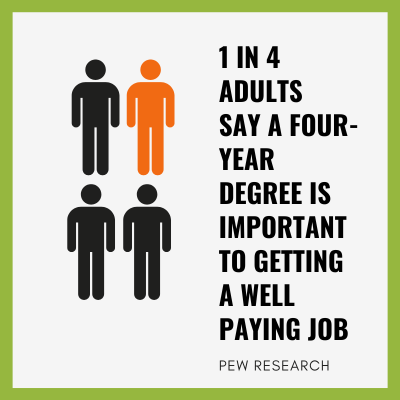Let me first say that I respect all of the people and the work that career service professionals do this blog post is not bashing them. My goal here is to start a discussion around how career services has changed, is changing and needs to change going forward. And in fact, career services people should be the ones leading this discussion at your campuses.
Career Services historically has been the place to avoid on campuses – a lot of the times stuck in a building at the back-end of the campus (sometimes in a prefab building) with limited personnel and resources. According to a Gallup poll, over 80% of people who go to college say that their reason for going is to get a good or better job. So, why is it that most colleges are still not funding their career services efforts in the same way they fund say sports as a core value proposition of the organization. I love college sports but shouldn’t every student get a chance at a great career whether they are in sports or not?
My colleague, Ryan Craig, wrote about how career services needs to change recently in his Gap Letter newsletter, titled “Abolish Career Services”. His premise being that career services needs to be much more adopted across the campus and in the classrooms from the start of someone’s 3rd level education (and from our perspective even before) as opposed to resume writing and scheduling interviews towards the end.
This approach which can be led by a much more elevated career services approach should involve everyone from academic advisors to curriculum revisions to faculty and staff in order to ensure each student is earning the right skills that makes them more prepared for the world of work. We will talk about skills much more later but for now let’s assume we are talking about an approach where we start to close the “Skills Gap” by ensuring a collaboration between students, institution and employers.
The right skills are being taught, students can see the skills they are earning, educators can monitor the skills as demonstrated in the classroom and in work experience and employers can provide on-going feedback.
It’s really not rocket science. But we argue that it comes back to seeing career services as a core value proposition of the institution. It is well documented that the current generation has a new perspective on higher education and does not necessarily view a four-year degree as the only path to a career. So what do they view as the magic bullet? Skills. Skills that lead to lasting careers.
When career services can demonstrate the value they offer students, it becomes a way to showcase a true value proposition that aligns with what the customer (yes, customer) is looking for. Value for the tuition they spend.
For the latest in career services and workforce development, visit our blog daily!


